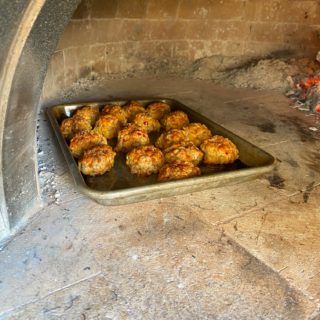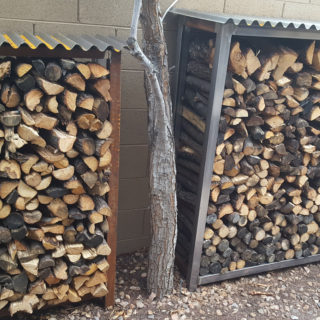
There are many ways you can inadvertently sabotage your pizza and keep it from turning out perfectly delicious.
Selecting poor quality toppings can affect the overall taste of your pizza, but it turns out the easiest ways to ruin a perfectly good pie start right at the foundation…the dough. Here are 5 ways to ruin pizza night:
#1 Use the wrong flour. Different recipes and applications call for different flours. Whatever your recipe recommends, stick with it! Antimo Caputo is the brand of flour used in the Fanatic home. But all “00” Caputo flours are not the same. “The BEST Pizza Dough Recipe” has been made with both the red and blue versions of the Antimo Caputo flour. The red bag yields a more dense, tough dough. Red flour doesn’t absorb as much water and seems better suited for lower oven temperatures. The blue version is better suited for our cooking style. We tend to bake our pies at approximately 800 degrees and this flour creates beautiful leopard spots and large airy bubbles. The blue dough is tender with just the right amount of chew and crunch.
#2 Imprecise measurements when making your dough. As with other baking recipes precise measurement is extremely important in pizza dough. Texture and handling are affected by this lack of attention. The dough can be too loose and very difficult to work with or too dense and elastic to turn out quickly. I have heard many times that New York water yields the best pizza dough and that might very well be true, however our Arizona water works just fine so long as it is heated to 105 degrees for our recipe.
 his crust is big, too fluffy. Looks like some of those frozen pizzas you can buy, that aren’t delivery…
his crust is big, too fluffy. Looks like some of those frozen pizzas you can buy, that aren’t delivery…
#3 Rushing the process. Let the dough ferment for the entire duration the recipe indicates! The yeast needs to grow and bloom and then the gluten must relax or you will have undesirable results. If you allow the dough to rest after being balled, you will be rewarded with a strong yet pliable dough. Dough that has been recently balled will be very elastic and tend to shrink back on itself rather than turn out quickly and easily. In our dough recipe, the dough bulk ferments for 24 hours after which it is balled, individually bagged, and allowed to rest in the refrigerator for 24 hours. Only then do we use it to make pizza. We have had friends try to reduce the fermentation time or skip the 24 hours wait after balling the dough and the response is always the same, “It just wasn’t like your pizza!!”
 *Flat, no leopard spots. Sad pizza
*Flat, no leopard spots. Sad pizza
#4 Poorly handling the dough. There are many aspects to this tip. The first is Do Not Disturb! The outer approximately 0.75-inch should not be touched. If you want good bloom and fluffy, bubbly crust leave this area alone. Don’t overwork the middle. Too much work in the center will create holes. Be sure to shake the excess flour off of the dough. Pick the dough up! Give it a good centrifugal flip. Flour burns and tastes terrible!
 *Sometimes your “heart” is in the right place, but it doesn’t turn out the way you had envisioned
*Sometimes your “heart” is in the right place, but it doesn’t turn out the way you had envisioned
#5 Oven temperature. The temperature of your oven can dramatically change the character of your pizza crust. Do you like a crispy, cracker-like crust? Then you want your oven to have a lower hearth temperature, approximately 650-700 degrees. You will need to cook the pizza longer, which will pull hydration out of the dough, evaporate the moisture, and give you a crispier texture. Do you prefer a more true Neopolitan style pizza? If so, crank that oven up! Get it hot (about 900 degrees) and cook that pizza for about 90 seconds. However, if you have your oven too hot or too cool, you may end up with a pizza that is crispier or soggier than you would like.




